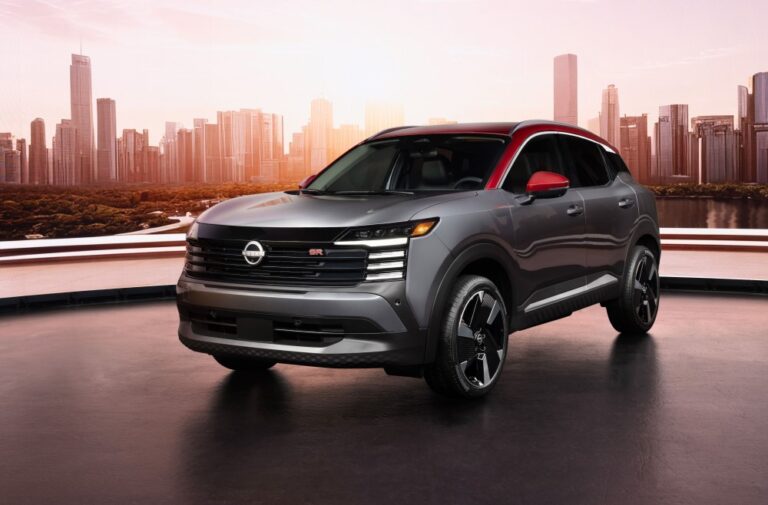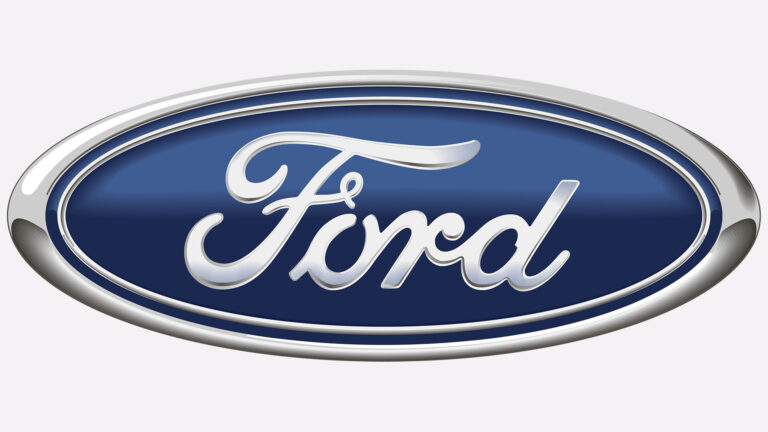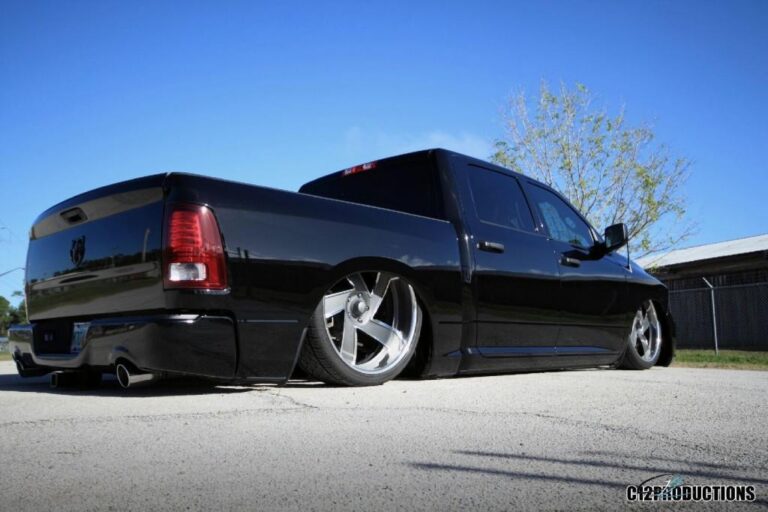Display Trucks For Sale: Your Comprehensive Guide to Mobile Advertising Powerhouses
Display Trucks For Sale: Your Comprehensive Guide to Mobile Advertising Powerhouses cars.truckstrend.com
In an increasingly crowded marketplace, capturing consumer attention is paramount. While traditional advertising mediums still hold their place, a dynamic and impactful solution has emerged, quite literally, to drive your message home: the display truck. More than just a vehicle, a display truck is a mobile billboard, an experiential marketing platform, and a powerful tool for direct engagement, bringing your brand directly to your target audience wherever they are. For businesses, event organizers, political campaigns, and public service initiatives alike, owning a display truck represents an unparalleled opportunity to amplify reach, enhance visibility, and create memorable brand experiences. This guide delves into everything you need to know about display trucks for sale, from understanding their core components and benefits to navigating the buying process and ensuring long-term success.
What Exactly is a Display Truck?
Display Trucks For Sale: Your Comprehensive Guide to Mobile Advertising Powerhouses
At its core, a display truck is a specialized commercial vehicle equipped with large-format digital screens, typically high-resolution LED displays, designed to showcase dynamic content on the go. These aren’t your average vans with a sticker; they are sophisticated mobile media platforms engineered for maximum visual impact and operational efficiency.
While the most common type is the LED Screen Truck (or "Jumbotron on Wheels"), the category also encompasses:
- Mobile Showroom Trucks: Designed with customized interiors for product demonstrations, pop-up shops, or interactive brand experiences.
- Promotional Vehicles: Tailored for specific campaigns, often incorporating unique branding, sound systems, and sometimes even stages or interactive elements.
Regardless of the specific type, a display truck typically comprises several key components:
- The Chassis: The foundation of the vehicle, ranging from light-duty pickup trucks to heavy-duty commercial trucks, chosen based on the size and weight of the display system and desired payload.
- LED Display System: The heart of the operation. These are high-brightness, outdoor-rated LED panels assembled into a seamless screen. Key specifications include pixel pitch (P-value), brightness (nits), refresh rate, and viewing angle.
- Power Source: Usually a robust, quiet-running generator capable of powering the entire display system, sound equipment, and any interior climate control or lighting. Some newer models might incorporate battery banks or solar solutions for supplemental power.
- Control System: A sophisticated computer system and software that manages the content displayed on the screen, allowing for real-time updates, scheduling, and remote operation.
- Sound System: High-quality external speakers often accompany the visual display, enhancing engagement with audio messages, music, or live feeds.
- Interior Customization: Depending on the purpose, the truck’s interior can be a simple control room, a luxurious client meeting space, a mobile office, or an interactive exhibition area.


Why Invest in a Display Truck? Benefits Galore.
The appeal of display trucks extends far beyond their novelty. They offer a unique blend of advantages that static billboards and traditional media simply cannot match:
- Unmatched Mobility & Reach: Unlike fixed advertising, a display truck goes where your audience is. Drive it to sporting events, concerts, festivals, bustling city centers, political rallies, or even disaster zones. This hyper-targeted mobility ensures your message reaches the right eyes at the opportune moment.
- High Impact & Visibility: Large, vibrant LED screens are incredibly difficult to ignore. Their dynamic nature, superior brightness, and ability to display full-motion video command attention in ways static signage cannot. They create a spectacle that naturally draws crowds.
- Incredible Versatility:
- Advertising: Launch new products, promote sales, announce events.
- Live Events: Display live feeds, scores, concert visuals, or event schedules.
- Public Service: Emergency alerts, community announcements, voter information.
- Political Campaigns: Rally support, broadcast speeches, display candidate messages.
- Entertainment: Outdoor movie nights, gaming events, watch parties.
- Experiential Marketing: Create immersive brand activations and interactive experiences.
- Cost-Effectiveness (Long-Term): While the initial investment can be significant, owning a display truck can be more cost-effective over time compared to continuously renting multiple static billboards or ad spaces. It’s a depreciating asset that generates income or value for years.
- Real-Time Adaptability: Content can be changed instantly and remotely, allowing for agile marketing campaigns, real-time updates, or immediate responses to unfolding events.
- Enhanced Engagement & Interactivity: With high-quality visuals and sound, display trucks foster deeper engagement. Many are equipped for interactive elements like social media integration, live polling, or even gaming.
- Powerful Brand Building: A display truck makes a statement. It projects innovation, dynamism, and a forward-thinking approach, leaving a lasting impression on your audience and reinforcing brand identity.

Key Considerations When Buying a Display Truck
Purchasing a display truck is a significant investment that requires careful consideration. Here are the crucial factors to weigh before making a decision:
- Budget: Display truck prices vary wildly. Establish a clear budget, accounting for the purchase price, potential customization, transportation, insurance, maintenance, and ongoing operational costs (fuel, content creation, staffing).
- Primary Purpose & Application: What will the truck primarily be used for?
- Constant advertising loops? (Requires robust, high-brightness screen)
- Live event support? (Needs excellent refresh rate and versatile inputs)
- Experiential marketing? (Focus on interior customization and interactive features)
- This dictates the size, screen type, and features you’ll prioritize.
- Screen Specifications:
- Pixel Pitch (P-value): This is critical. A smaller "P" number (e.g., P3, P4) means a higher pixel density, resulting in a clearer image from a closer viewing distance. For outdoor viewing where audiences are further away, P6, P8, or P10 might suffice and be more cost-effective.
- Brightness (Nits): Essential for outdoor visibility, especially in direct sunlight. Look for at least 5,000-6,500 nits for strong daytime performance.
- Refresh Rate: A higher refresh rate (e.g., 3840Hz+) prevents flickering, especially noticeable when filmed or broadcasted.
- Viewing Angle: Ensures content is visible from wide angles without significant color shift or dimming.
- Truck Chassis & Vehicle Condition:
- New vs. Used: New trucks offer warranties and the latest tech but come at a premium. Used trucks can be more affordable but require thorough inspection of the vehicle’s mechanics (engine, transmission, tires, brakes) and the display system’s condition.
- Mileage & Maintenance History: For used trucks, a detailed service record is paramount.
- Weight Capacity: Ensure the truck’s chassis can safely handle the weight of the display, generator, and any interior build-out, plus crew and fuel.
- Power Source:
- Generator Size: Must be sufficient to power all components. Over-specifying slightly provides a buffer.
- Fuel Type: Diesel generators are common for their efficiency and power.
- Noise Levels: Crucial if operating in quiet areas or residential zones. Look for quiet-run or "super silent" generators.
- Sound System: Consider the quality and power of external speakers. A good sound system amplifies your message and enhances the overall experience.
- Software & Content Management: Evaluate the ease of use, stability, and features of the display control software. Can you easily upload, schedule, and manage content? Does it support various media formats?
- Regulatory Compliance & Permits: Research local, state, and national regulations regarding vehicle size, weight, noise, and mobile advertising. You may need special permits or licenses.
- Warranty & Support: A strong warranty on both the vehicle and the LED system, along with reliable technical support from the seller, is invaluable.
- Customization Options: Discuss potential interior build-outs, exterior branding, unique features (e.g., hydraulic lift for the screen, rooftop stage, interactive kiosks).
Where to Find Display Trucks For Sale
Finding the right display truck requires knowing where to look:
- Specialized Manufacturers & Dealers: Companies that exclusively build and sell display trucks are often the best source for new, custom-built units. They offer warranties, financing options, and tailored solutions.
- Commercial Truck Dealerships: Some larger dealerships may carry used display trucks, especially if they have a specialized commercial vehicle division.
- Online Marketplaces: Websites like CommercialTruckTrader.com, eBay Motors, Alibaba (for international suppliers), and industry-specific forums or classifieds can list both new and used options.
- Auctions: Government surplus auctions, repossessions, or liquidation sales can sometimes yield display trucks at competitive prices, but often without warranties or detailed histories.
- Industry Networking: Attending trade shows for advertising, events, or trucking can connect you with sellers and manufacturers. Sometimes, existing mobile marketing companies might sell off older units to upgrade.
The Buying Process: A Step-by-Step Guide
- Define Your Needs & Budget: Revisit the considerations above. Be specific about your use case, required features, and realistic budget.
- Research & Identify Sellers: Compile a list of potential manufacturers, dealers, and private sellers. Read reviews, check their reputations.
- Initial Contact & Information Gathering: Request detailed specifications, photos, videos, and pricing. Ask about customization options, lead times (for new builds), and available inventory (for used).
- Thorough Inspection (Crucial for Used):
- Vehicle: Hire a mechanic to inspect the engine, transmission, brakes, tires, and overall chassis condition.
- Display System: Test the LED screen for dead pixels, brightness uniformity, color accuracy, and refresh rate. Test the generator, sound system, and control software. Ask for a demonstration of all features.
- Request Documentation:
- Vehicle title and registration.
- Maintenance records (for used).
- Specifications sheet for the LED screen and generator.
- Warranty information.
- Operator manuals.
- Negotiate Price: Don’t be afraid to negotiate, especially on used trucks. Factor in any needed repairs or upgrades into your offer.
- Arrange Financing (If Needed): Explore loan options through banks, credit unions, or the seller’s preferred finance partners.
- Finalize Purchase & Transport: Review the sales agreement meticulously. Arrange for insurance and transport of the vehicle to your location.
- Post-Purchase Considerations:
- Training: Ensure your team receives adequate training on operating both the truck and the display system.
- Insurance: Obtain comprehensive commercial insurance covering both the vehicle and its specialized equipment.
- Maintenance Schedule: Establish a regular maintenance plan for both the truck’s mechanical components and the LED display system.
Operating and Maintaining Your Display Truck
Owning a display truck is an ongoing commitment. Proper operation and maintenance are key to maximizing its lifespan and ROI.
- Content Creation and Scheduling: Invest in good graphic designers and video editors. Plan your content calendar strategically, scheduling different messages for different locations and times of day.
- Driver Training and Safety: Drivers must be licensed for commercial vehicles (if applicable) and thoroughly trained on the truck’s unique dimensions, weight, and blind spots. Safety protocols for deploying and retracting screens are crucial.
- Regular Maintenance:
- Vehicle: Standard truck maintenance (oil changes, tire rotations, brake checks) is essential.
- Display System: Clean LED screens regularly with appropriate solutions. Inspect cables, connections, and power supplies. Run diagnostic checks on the control software.
- Generator: Regular oil changes, filter replacements, and load testing are vital for generator longevity.
- Troubleshooting Common Issues: Familiarize yourself with basic troubleshooting for the display and generator to minimize downtime.
- Storage: Store the truck in a secure, covered location when not in use to protect it from weather and theft.
Display Truck Price Table (Estimated Ranges)
Prices for display trucks vary significantly based on size, screen specifications, new vs. used condition, and customization. The table below provides estimated ranges to give you a general idea. These are not definitive prices and can fluctuate based on market conditions, manufacturer, and specific features.
| Category | Type/Key Features | Screen Size (Approx.) | New Price Range (USD) | Used Price Range (USD) | Ideal For |
|---|---|---|---|---|---|
| Entry-Level/Compact | Small truck/van chassis, basic LED screen (P8-P10), minimal interior. | 60-100 sq ft | $80,000 – $150,000 | $40,000 – $90,000 | Local businesses, small events, mobile billboard advertising, budget-conscious buyers. |
| Mid-Range/Versatile | Medium-duty truck, high-res LED (P4-P6), good brightness, sound system, basic control room. | 100-200 sq ft | $150,000 – $300,000 | $90,000 – $180,000 | Regional advertising campaigns, concerts, sporting events, political rallies. |
| High-End/Large-Scale | Heavy-duty commercial truck, ultra-high-res LED (P2-P4), advanced control system, robust generator, customizable interior, multiple screens. | 200-400+ sq ft | $300,000 – $600,000+ | $180,000 – $350,000+ | Major brand activations, large festivals, national tours, premium experiential marketing. |
| Specialized/Custom | Mobile showrooms, pop-up stores, interactive experience trucks with unique features. | Varies | $250,000 – $1,000,000+ | $150,000 – $500,000+ | Bespoke brand experiences, product launches, unique promotional needs. |
Disclaimer: These prices are estimates only. Factors like specific LED panel quality, generator brand, truck make/model, customization level, and market demand will significantly impact the final cost.
Frequently Asked Questions (FAQ)
Q1: How much does a display truck cost?
A1: As detailed in the price table above, costs can range from $80,000 for a new entry-level model to over $1,000,000 for a highly customized, large-scale unit. Used trucks are generally more affordable, starting around $40,000-$50,000.
Q2: What is "pixel pitch" and why is it important?
A2: Pixel pitch (often denoted as ‘P’) refers to the distance in millimeters between the centers of two adjacent pixels on an LED screen. A smaller pixel pitch (e.g., P3) means more pixels per square inch, resulting in higher resolution and a clearer image, especially at closer viewing distances. For outdoor display trucks, P6-P10 is common, while P3-P4 offers premium clarity for closer audiences.
Q3: Can I customize the truck’s interior?
A3: Absolutely. Many manufacturers offer extensive interior customization, transforming the space into a control room, mobile office, client lounge, product demonstration area, or even a full-fledged pop-up store.
Q4: What are the legal requirements for operating a display truck?
A4: Requirements vary by location. You’ll need to check federal (e.g., DOT regulations for commercial vehicles), state, and local laws regarding vehicle size and weight, commercial driver’s licenses (CDL), noise ordinances, and specific permits for mobile advertising or event operations in certain areas.
Q5: How do I create content for the screens?
A5: Content is typically created using standard graphic design and video editing software (e.g., Adobe Creative Suite). The finished content (images, videos, animations) is then uploaded to the truck’s control system, which manages playback and scheduling. Some systems allow for real-time streaming and social media integration.
Q6: What’s the lifespan of a display truck?
A6: With proper maintenance, the truck chassis can last 10-15 years or more, similar to other commercial vehicles. The LED display panels typically have a lifespan of 50,000 to 100,000 hours of operation before significant degradation, which translates to many years of use. Generators also require regular maintenance to ensure longevity.
Q7: Is it better to buy new or used?
A7: Buying new offers the latest technology, full warranties, and customization options, but at a higher cost. Used trucks are more budget-friendly and available immediately, but require thorough inspection and may not have the newest features or comprehensive warranties. Your budget and specific needs will dictate the best choice.
Conclusion
Display trucks represent a powerful frontier in mobile marketing and event engagement. Their ability to deliver high-impact, dynamic content directly to target audiences offers an unparalleled advantage in today’s competitive landscape. While the investment is significant, the long-term benefits in terms of reach, versatility, and brand building can yield substantial returns. By understanding the different types available, diligently considering key specifications, and following a structured buying process, you can acquire a mobile advertising powerhouse that propels your message forward. Whether you’re a business looking to innovate your advertising, an event organizer aiming to captivate crowds, or a campaign seeking to rally support, a display truck for sale might just be the dynamic solution you’ve been searching for to drive your success.





